Contact
Tööstuse 43, Tallinn, Estonia
Store: +372 508 3309
Workshop: +372 5301 8568
Tähesaju tee 31, Tallinn Estonia
Store: +372 5885 7752
Workshop: +372 5301 6938
Info: +372 508 3309
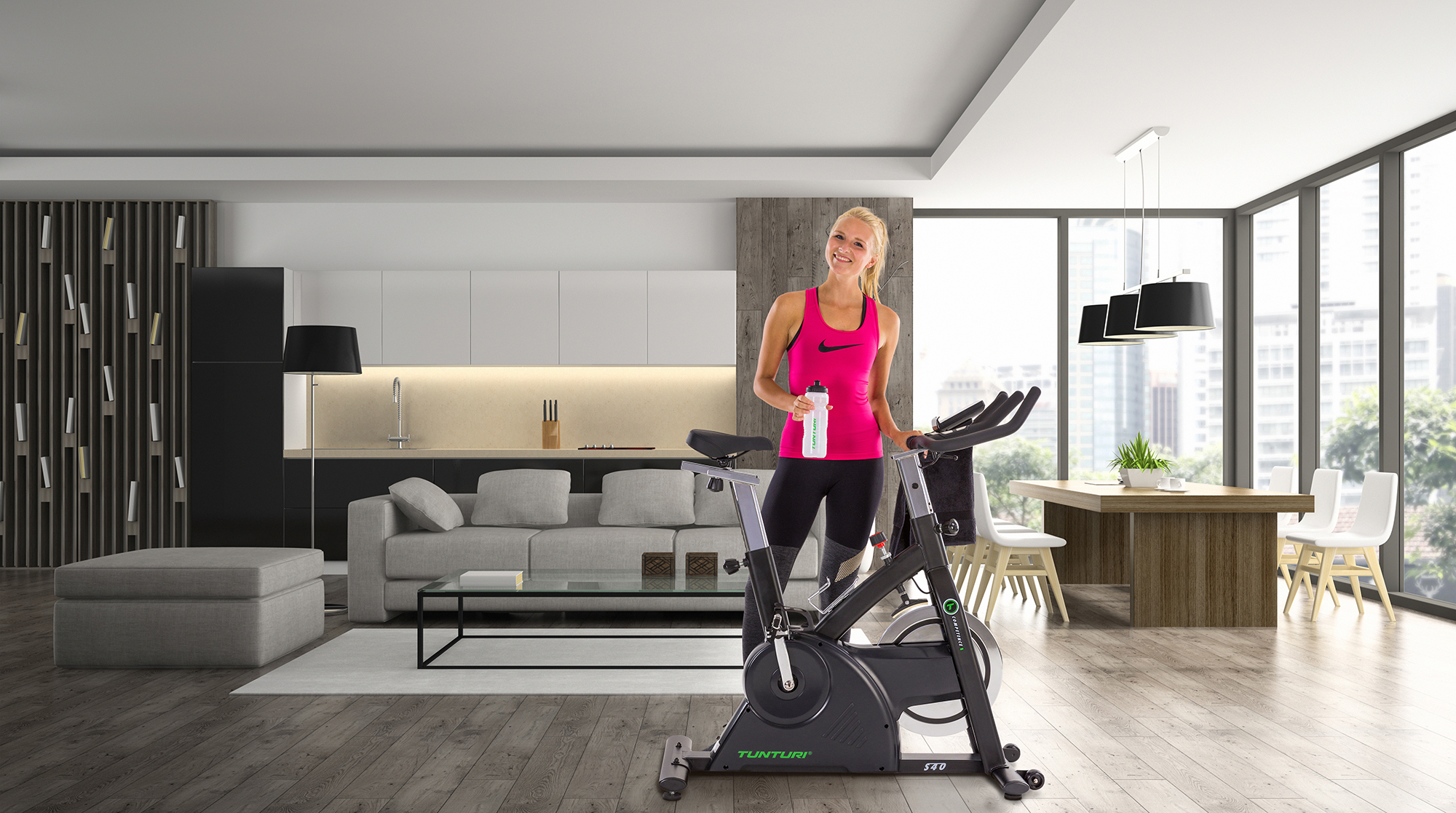
Cycling provides an excellent cardio workout that increases muscle tone, strengthens leg muscles and is an effective way to burn calories, and is a great way to improve cardiovascular health. A cycletrainer does not put as much strain on the body as an elliptical or treadmill, for example. Choosing the best trainer is not an easy task, so in this post we’ll describe the different types of trainer, from which you’re sure to find a home trainer that suits your health and preferences. If you would like to find out more about other exercise bikes, you can check out the Velomarket blog post “Which exercise equipment is suitable for your home?” .
Strengthens muscles. Cycling strengthens and tones your leg muscles. The main muscles that are loaded are the quadriceps (front of the thigh), gluteus maximus, hamstrings, hamstrings.
Helps to lose weight. Weight loss with cycling can be extremely effective. The number of calories burned depends on your age, gender and exercise intensity. But the most important factor in losing weight is consistency.
Strengthens the heart. Cycling is an effective and simple form of cardiovascular exercise. Cardio training on a velo-trainer can help you prepare for a marathon or just to cope better with everyday activities. A healthy cardiovascular system boosts your blood’s oxygen and your body’s energy supply, reduces the risk of stroke and disease, and lowers blood pressure.
At any time, in any weather. Exercising at home can help you stick to your training schedule, as you can work out at home without being disturbed by inclement weather.
Suitable for everyone. With a bicycle, everyone can choose the right load and level of difficulty for them, without putting too much strain on the joints. It’s also ideal for those who have an injury but still want to keep fit. The movement is smooth and doesn’t put too much strain on joints or muscles.
Does not take up much space. Home exercise bikes can also be folded and are easy to move – many have small transport wheels underneath, making it very convenient to move the exercise bike when you’re not exercising.
Saves time. At home, you can jump on the trainer at any time and start exercising. There’s no time to get out of the house or prepare for the gym.
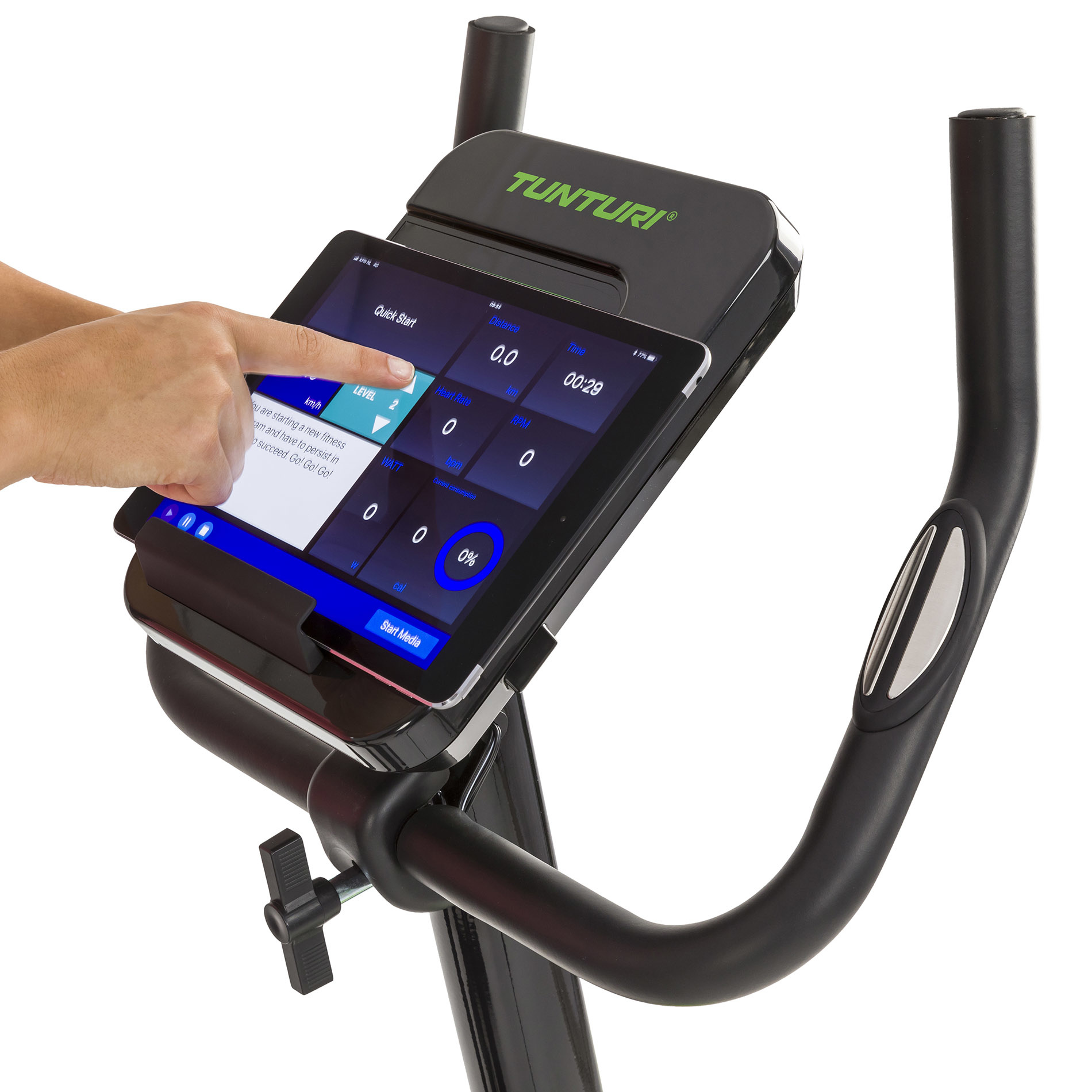
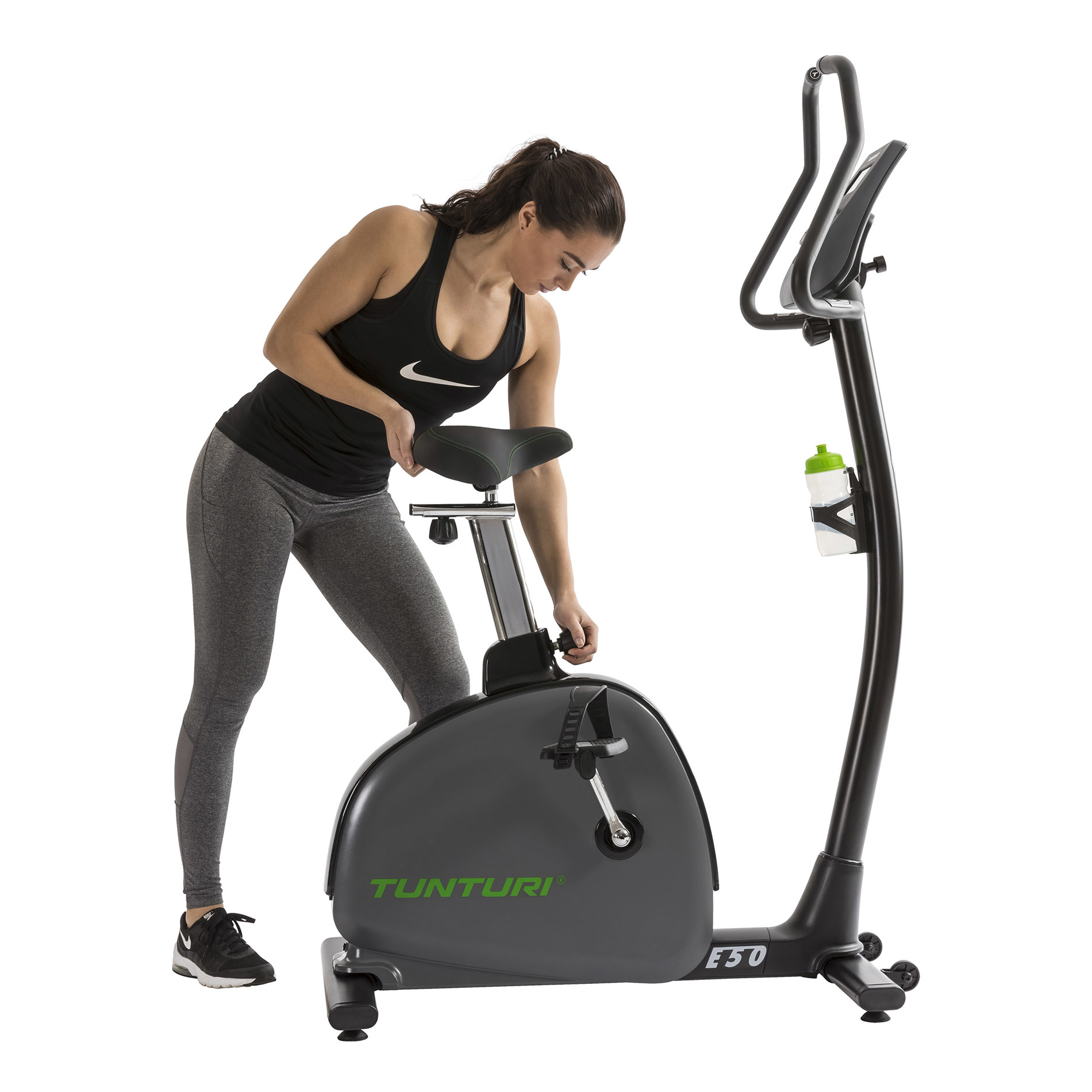
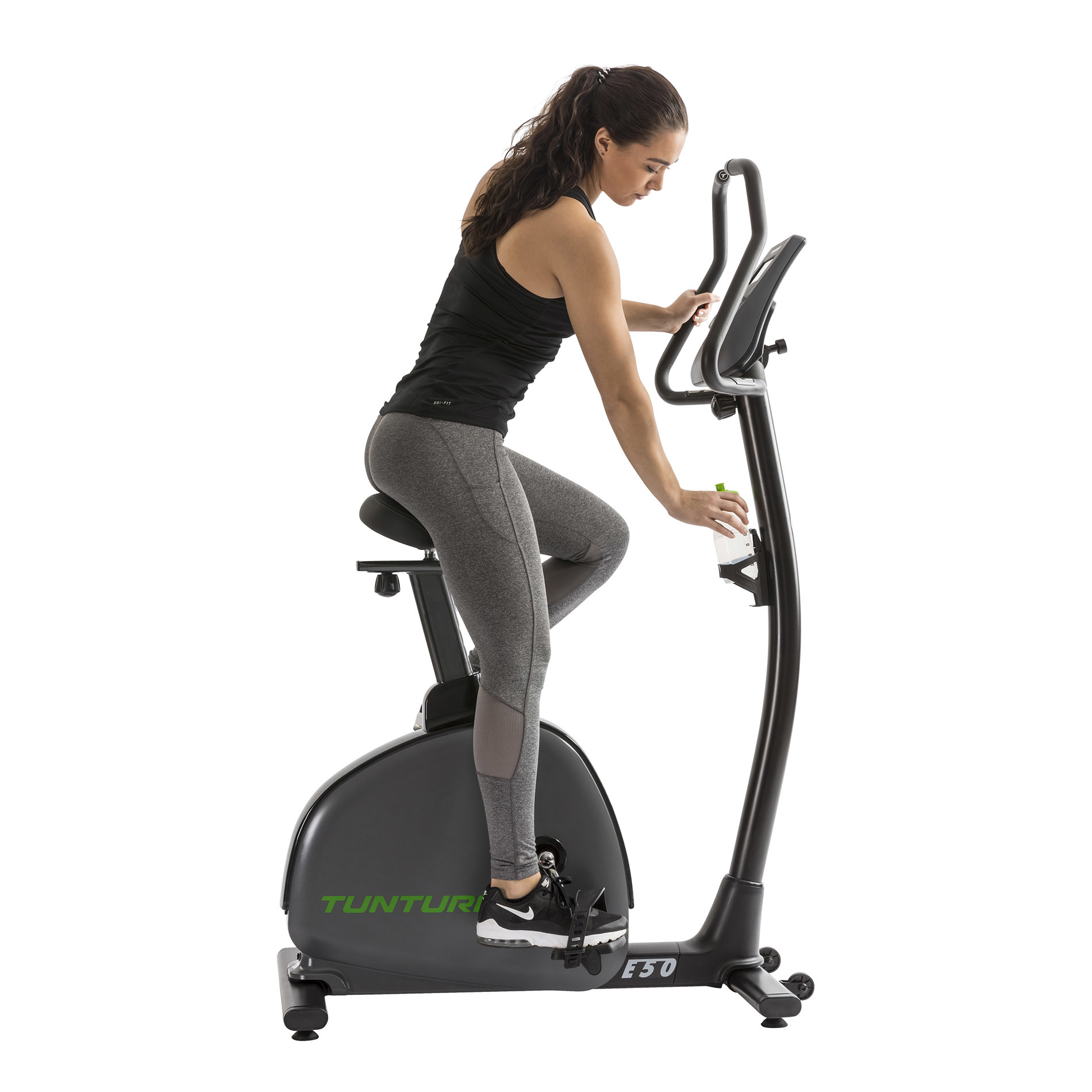
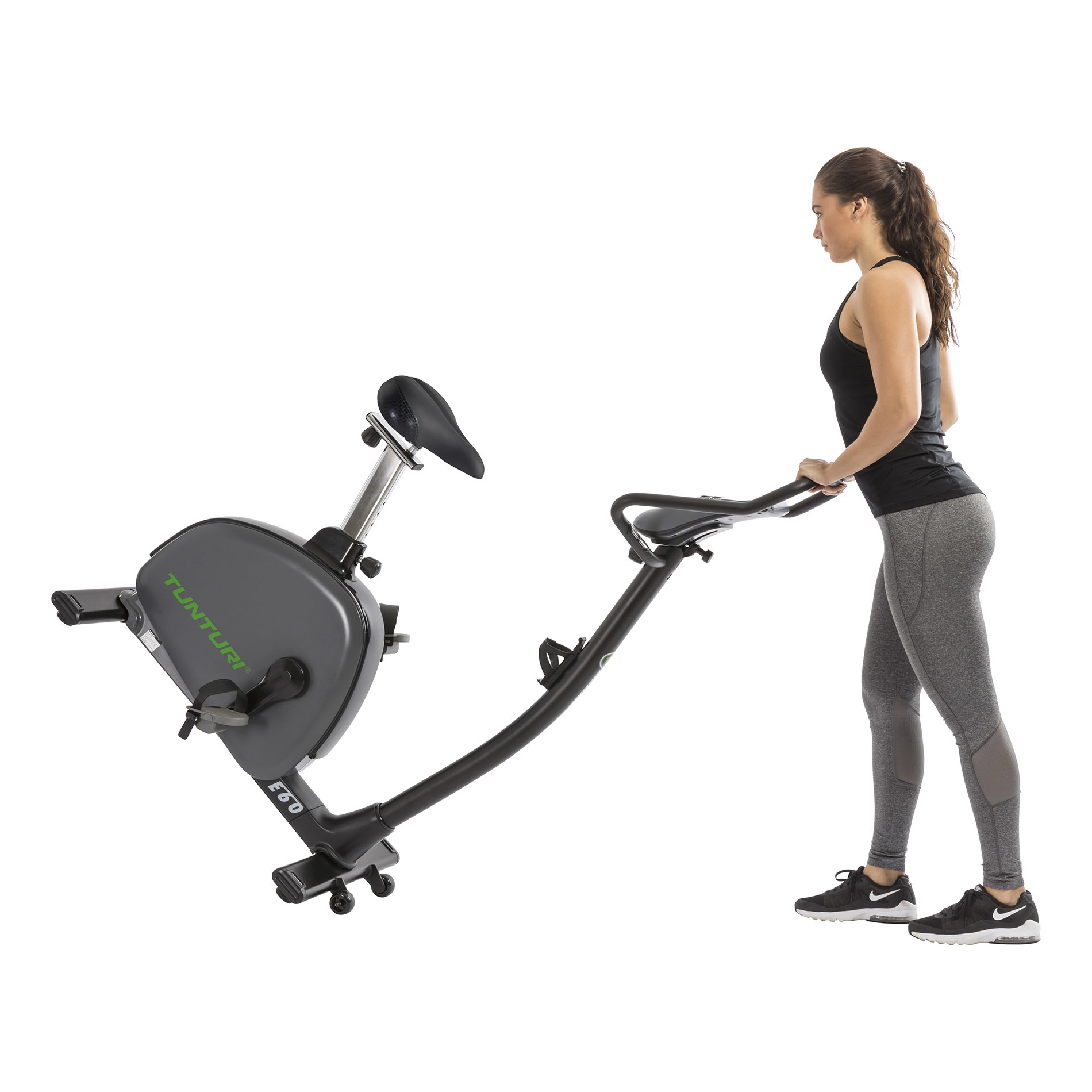
There are different types of pedal bikes: spinning bikes, upright pedal bikes, recumbent pedal bikes and bike training bikes, which allow you to use a normal bike indoors. Each velo-trainer has specific components, which are described below:
Hooratat: a large weighted disc, usually 14-20 kg. Located at the front of the velodrome where the front wheel normally goes. The weight of the wheel determines the comfort and smoothness of cycling. The heavier the flywheel, the smoother and more comfortable the pedalling. If the flywheel is too light, you may feel bumps when pedalling. The weight of the load therefore depends on your goals, whether you want to ride to the top of Vällamägi or take it easy around the lake.
>15 kg for advanced
9-14 kg for the average athletic person
7-9 kg for beginners
The recommended weight of the flywheel should be at least 7 kg, as this will prevent “jumping”. If you want to train 2 to 3 times a week, the weight of the flywheel should be over 9 kg.
Saddle. Sport saddles are long, narrow and with minimal padding, usually on spinning bikes because they are designed for more intense exercise. Typically, pedal bikes (machines with a more upright riding position) have wider and softer saddles with more padding. Make sure the seat can be raised and lowered. Slide the saddle up to your hips, as this height prevents back and joint injuries. Horizontal adjustment is a plus, but not necessary. The height of the handlebars should also be adjustable so you can find the right position.
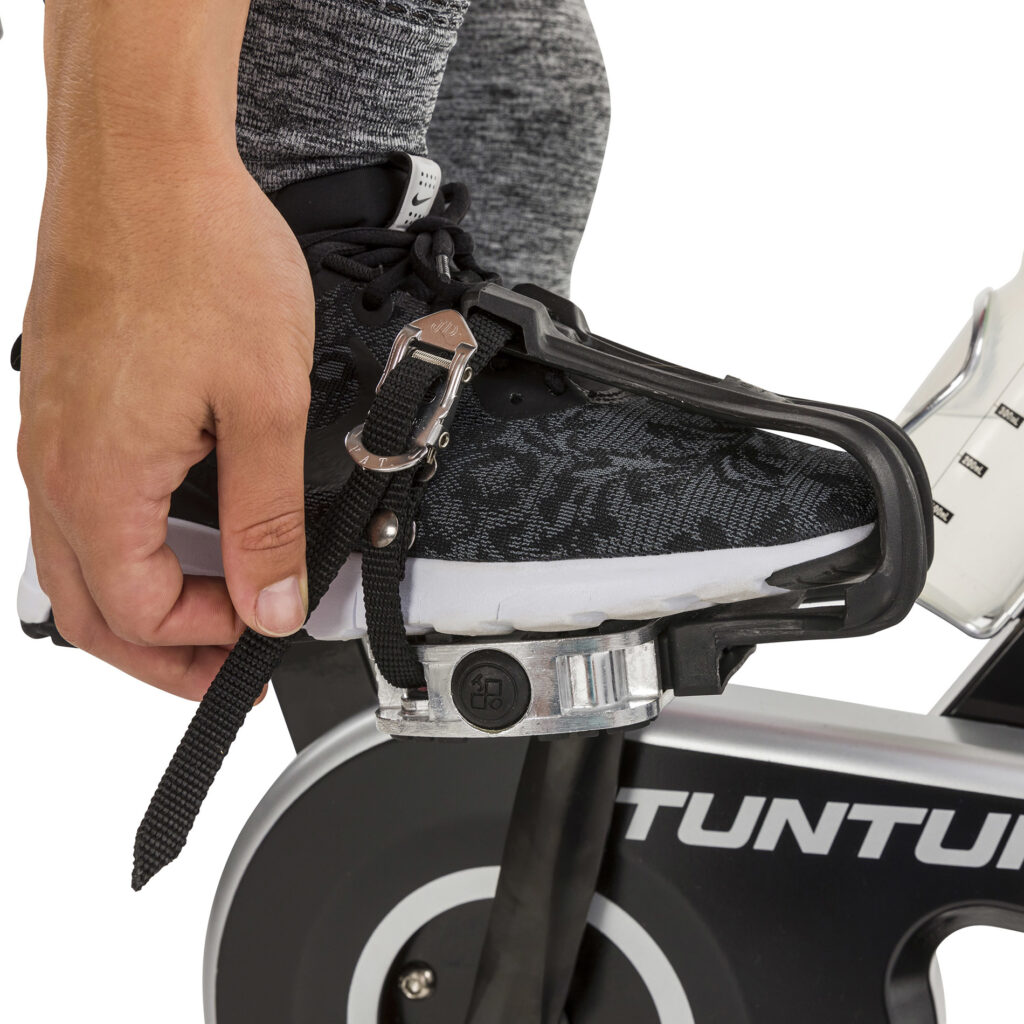
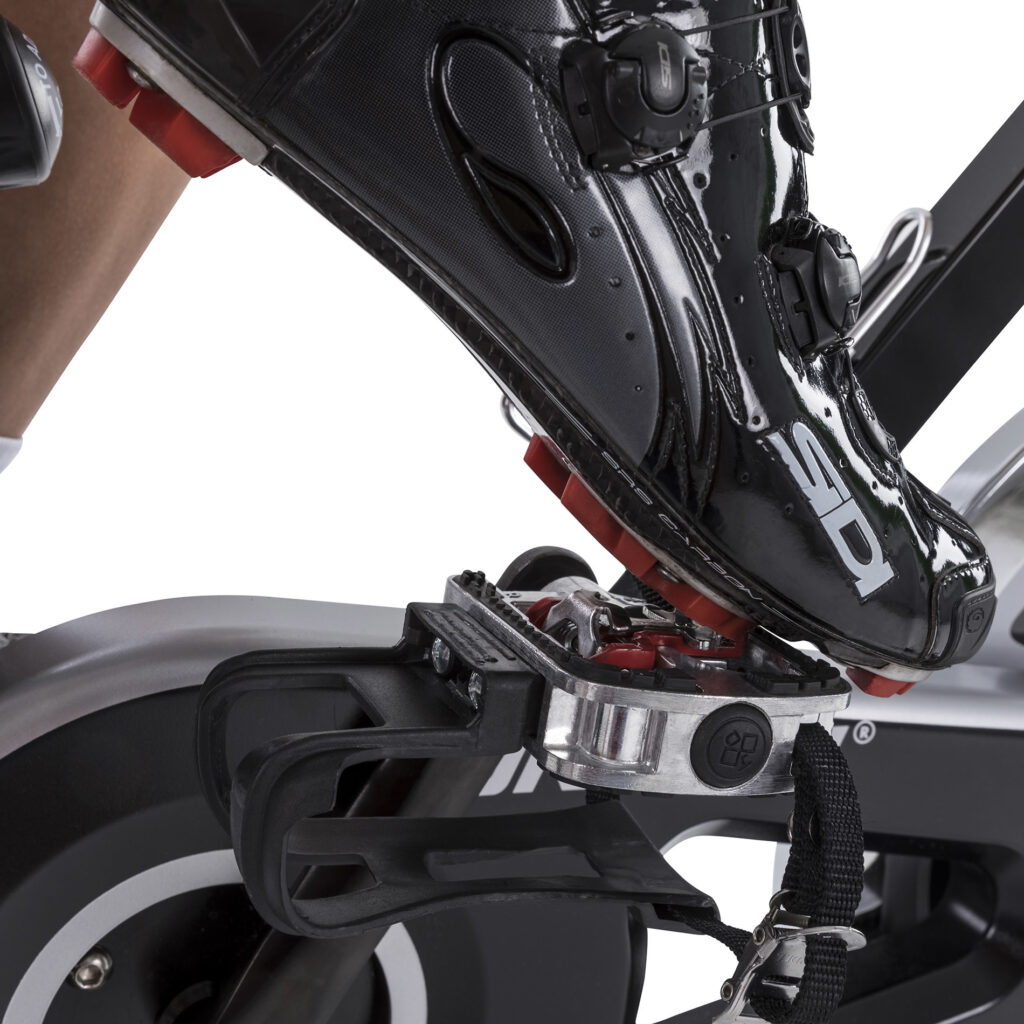
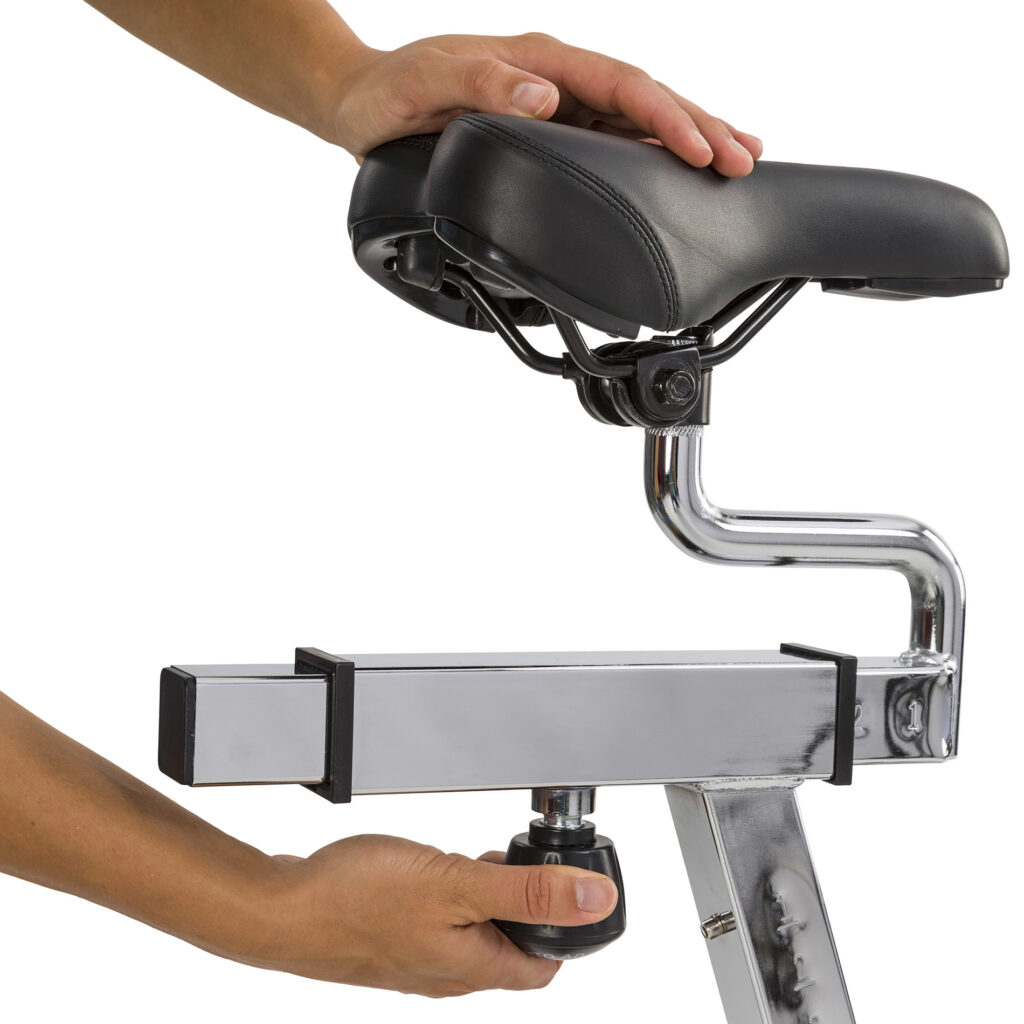
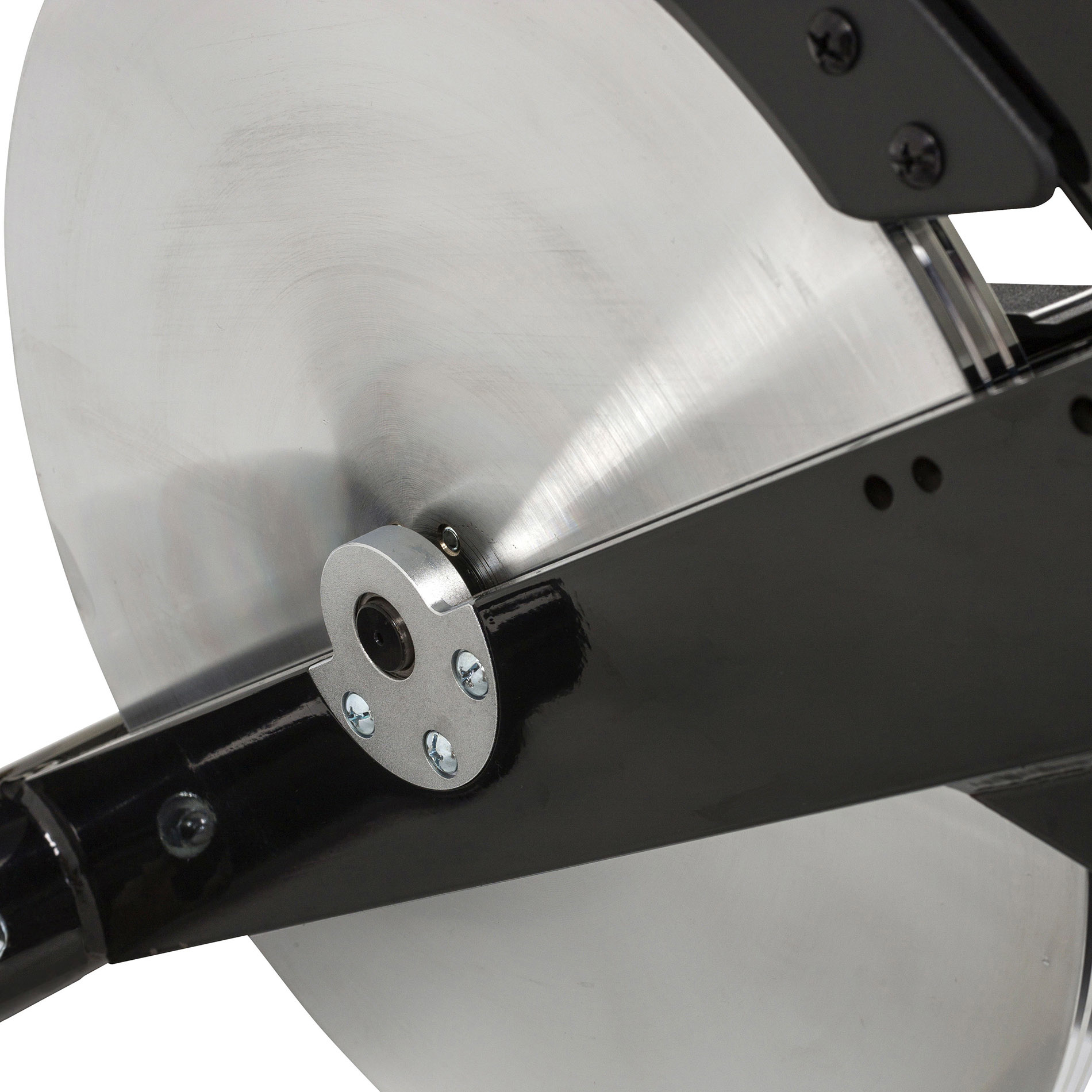
Pedals. Depending on the type of pedal bike, some pedals have straps to hold the foot in place while pedalling. Some of them have a mounting mechanism on the pedals that requires special wheel shoes.
Obstruction systems. The resistance determines how much force you have to apply when pedalling. For example, when you are driving uphill, the obstacle is bigger, you have to use more power. Cycle training bikes have three different types of resistance mechanisms:
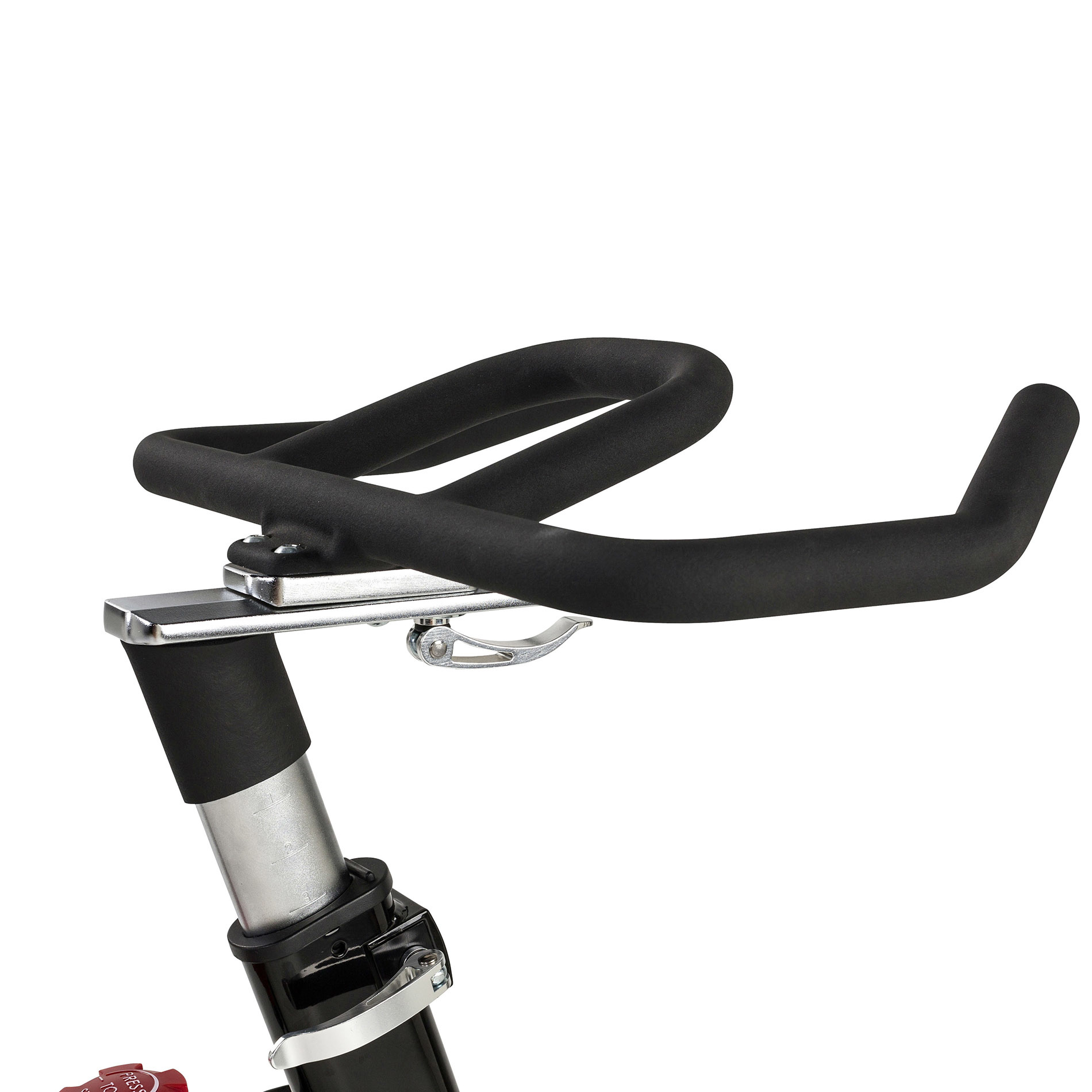
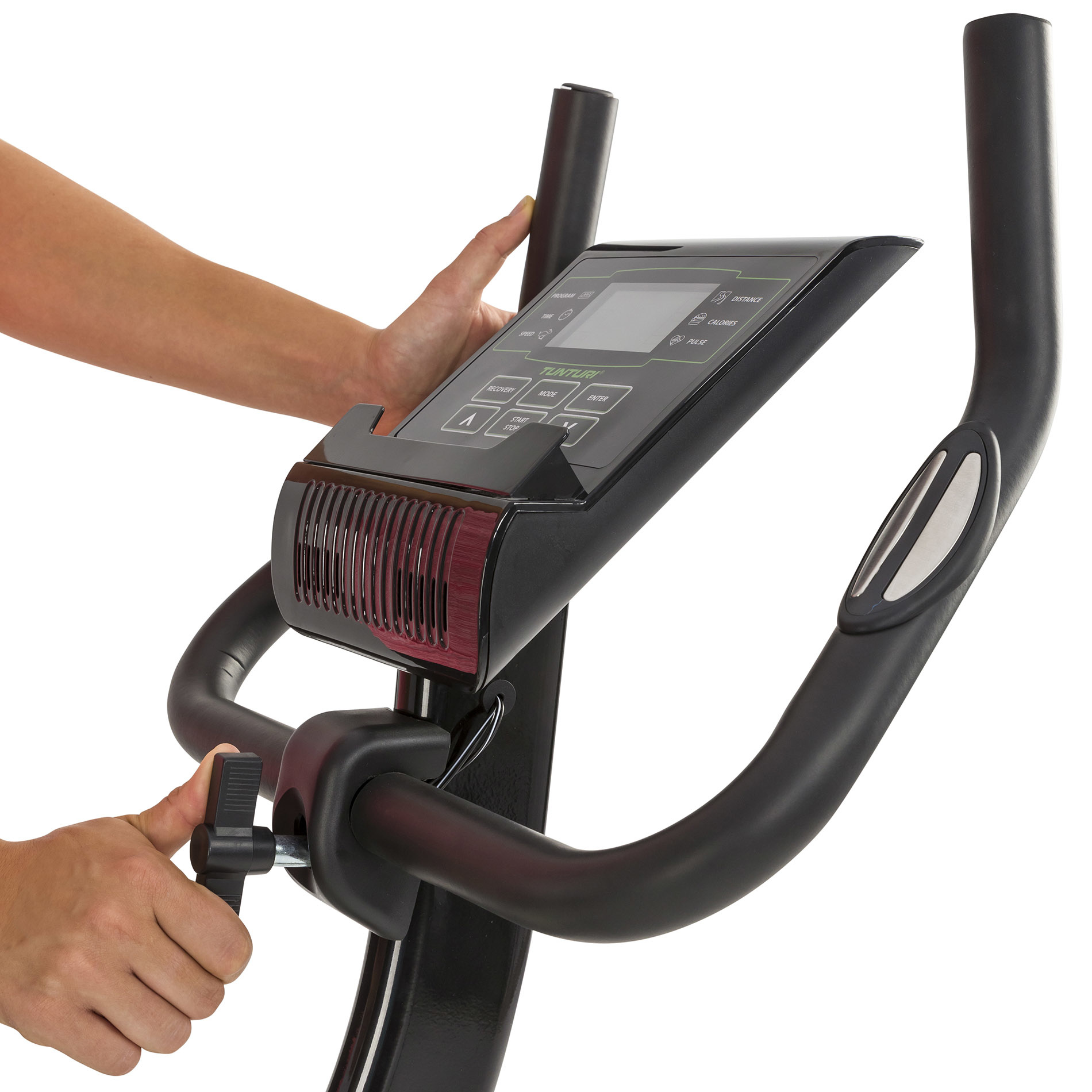
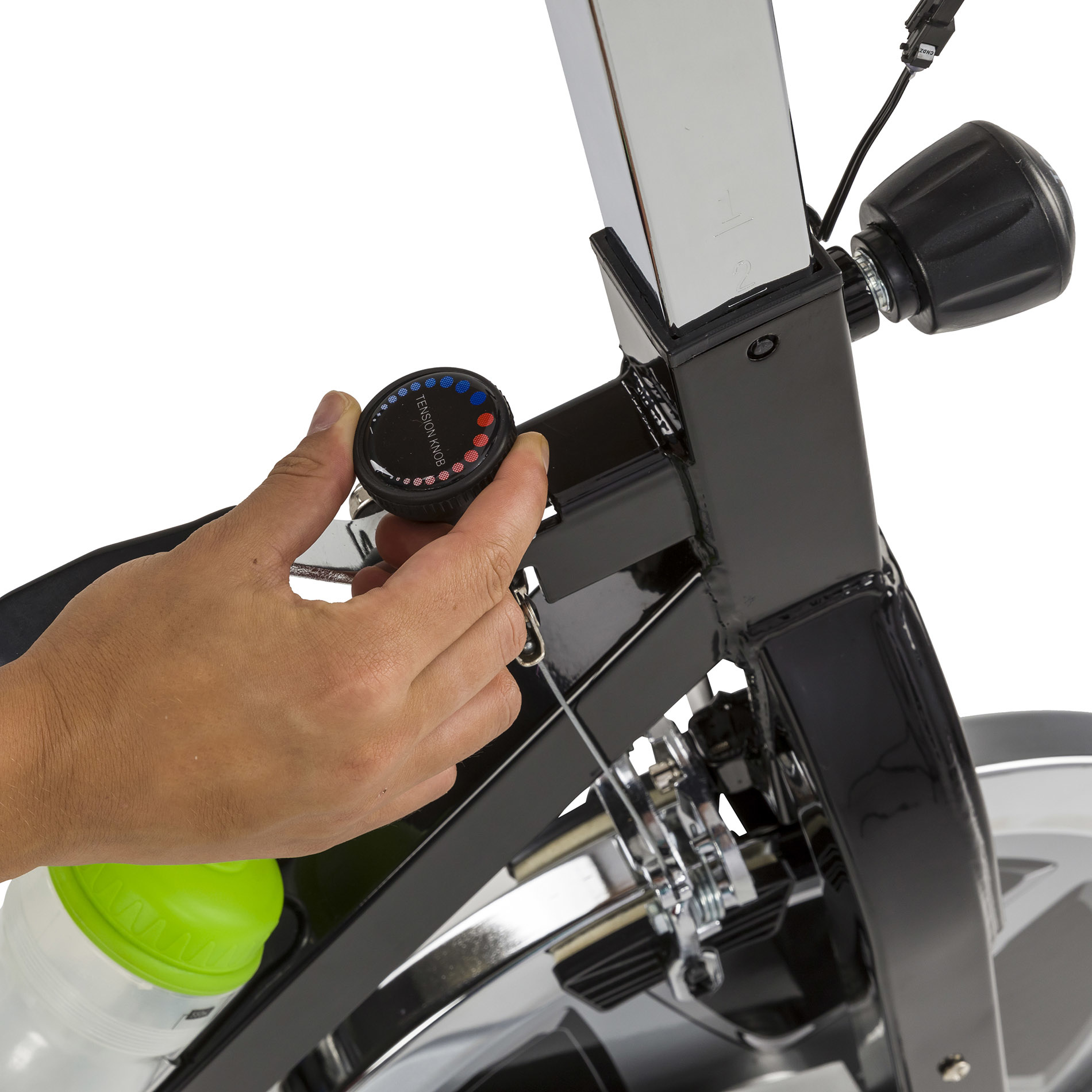
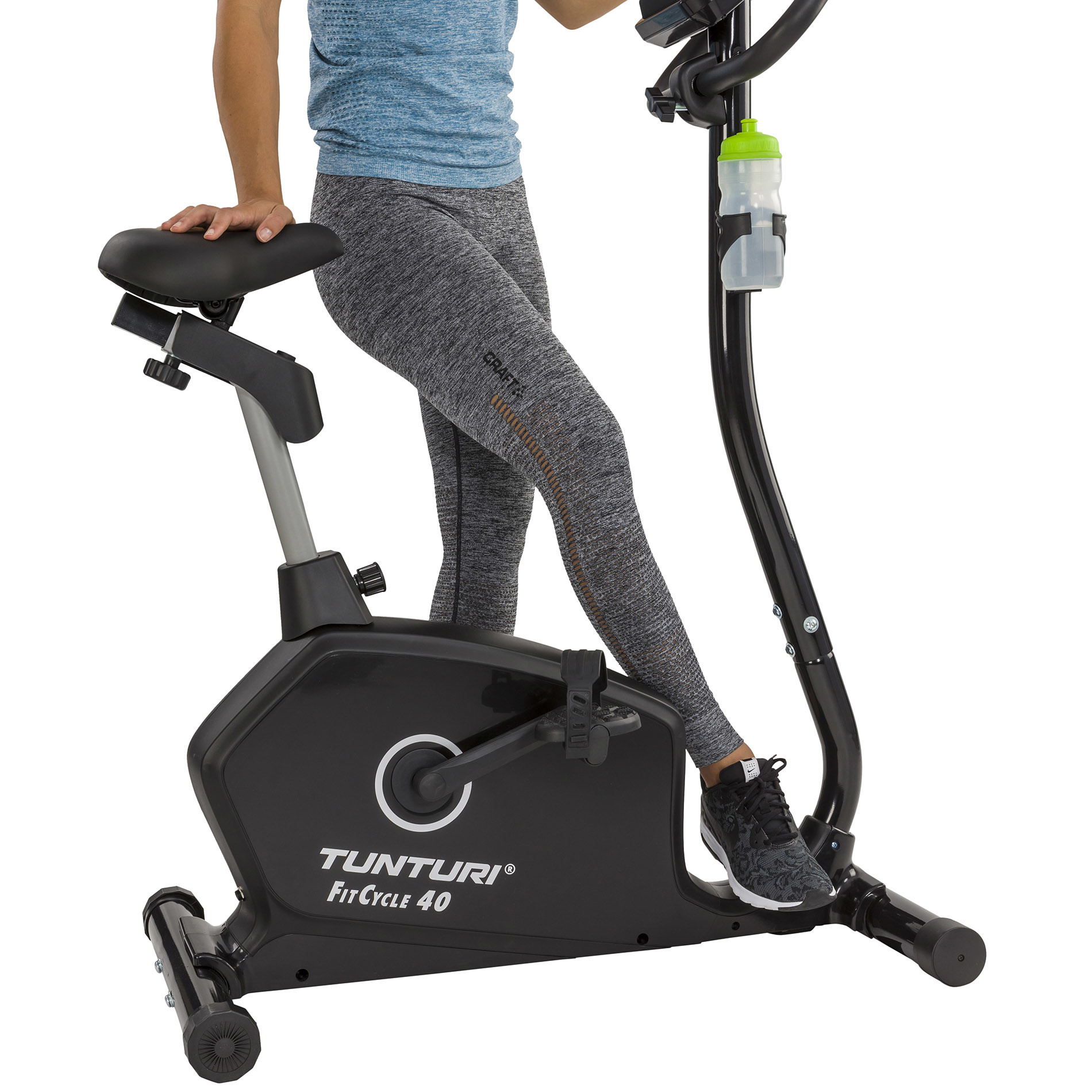
Screen: the screen displays various parameters such as distance, speed, exercise time, estimated calorie burn and heart rate. Some screens are analogue and show only the basic elements, and some are digital touchscreens that contain much more information.
Many bikes can be connected via Bluetooth to your smart device, where you can collect information about your training (distance, speed, time, etc.) using a wide range of apps. There are so many different apps you can download to your smartphone to set up and follow your training plan.
More expensive pedal bikes also have Wi-Fi. On the screen, you can see different training programmes (live or pre-recorded) and track your training data. These models are usually more expensive and may require a monthly subscription fee to access training videos.
Watts (W) – Watts are a measure of pedalling power and are a good indication of the maximum power of the bicycle. With a higher capacity pedal exerciser, you can get a more precise and efficient workout.
In the case of cycling trainers, cheap does not necessarily mean bad. Usually, it just means that you get more basic equipment.
A more expensive pedal sled weighs more and may be safer to ride because it stays in place better. Usually there are more ways to set up the machine – move the handlebars and the seat back and forth and up and down. A high price doesn’t always mean that the exerciser has all the features you want.
The type of obstacle used on a bicycle training machine will affect the price. Strap and friction resistors are usually cheaper, and bikes using magnetic resistance are likely to be more expensive. Most of the more expensive exercise bikes also come with Wifi and the option to connect the exercise bike to your smart device. A cheaper bike might have a similar frame and build quality, but without the tablet and smart features.
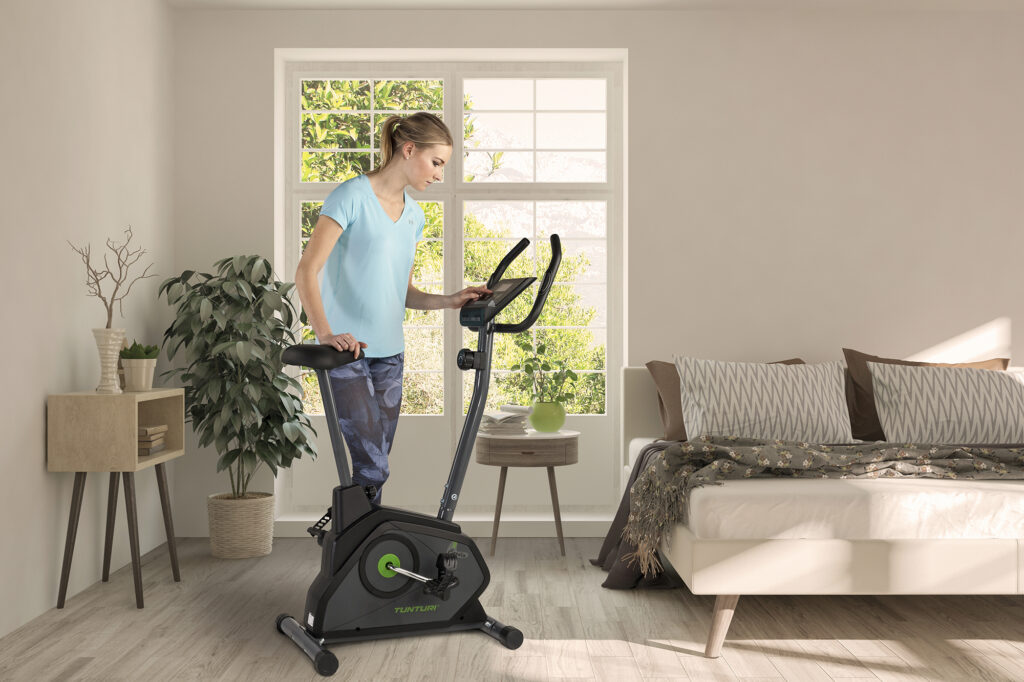
The exact riding position depends on the type of pedal stroke. When standing next to the wheel, the saddle should be at hip height. Then, while sitting on the bike, place your foot on the pedal and when the pedal is fully down, your foot should be slightly bent at the knee. The leg must not be straight at the knee. If you take your foot off the pedal, you should be able to touch the floor with your toes. If the saddle is too high or too low, it can cause knee pain during exercise. Hands should also be slightly bent at the elbow when on the handlebars. The back should be straight (not hunched) and do not hide the head or neck between the shoulders.
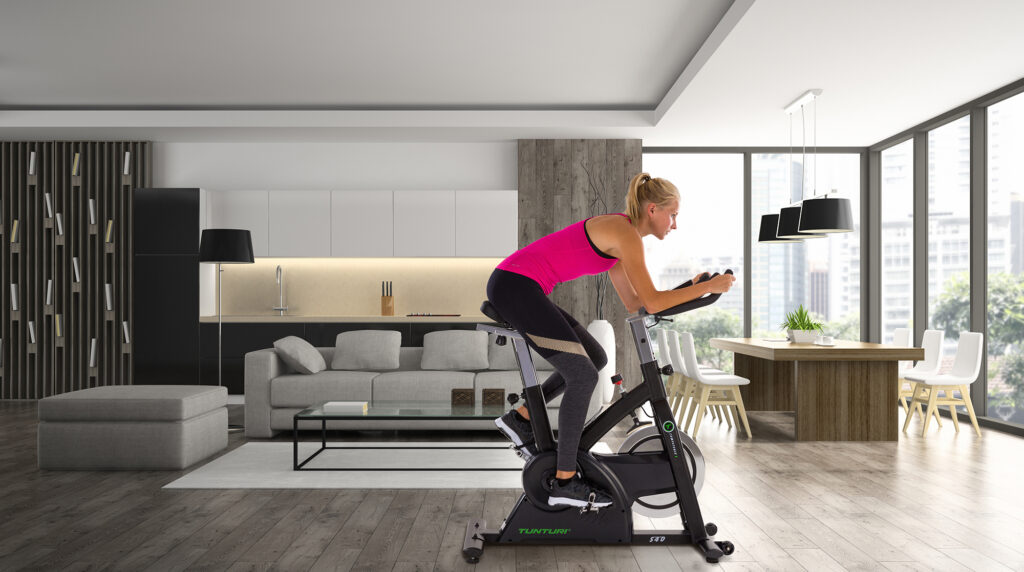
These bicycle trainers are modelled on road bikes – a sporty saddle with a forward leaning posture. The handlebar allows you to hold your hand in different positions. A flywheel is mounted above the front wheel, weighing 14-20 kg. The weight is added manually. The pedals are strapped or clamped and reinforced to make it safe to do intense, regular and fast training while standing on the pedals. This way, the force can also be used to lift the pedal, or pull, not just push it.
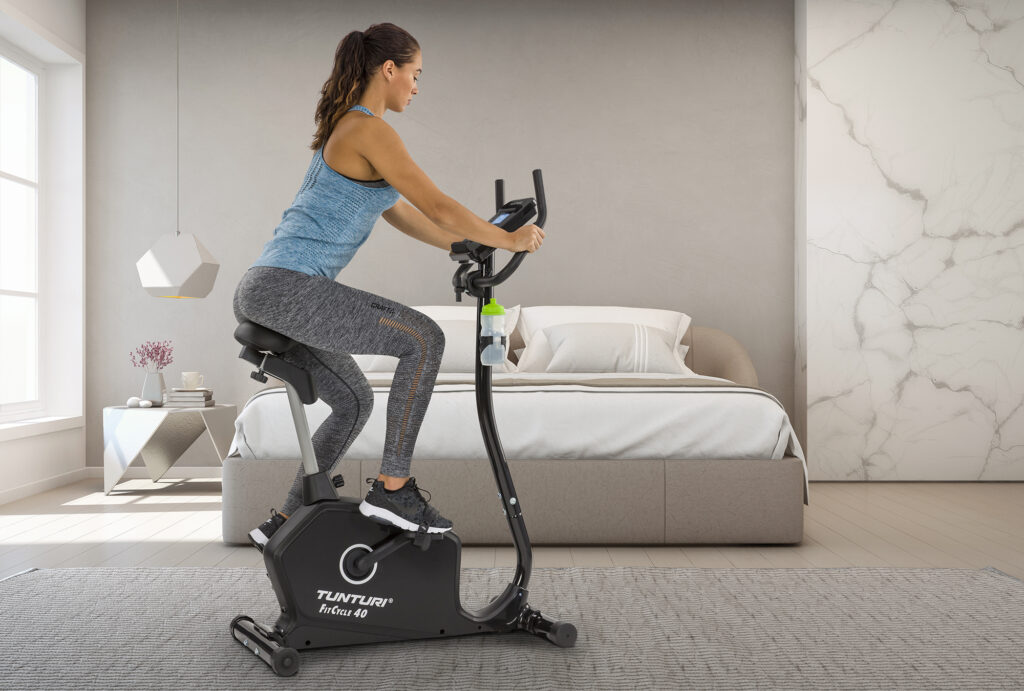
These bicycle trainers are not designed for serious intensive training like sprinter or spin bikes. They have a wider and more comfortable saddle, and the pedals are not reinforced, which should withstand regular vigorous exercise. Suitable for a large group of users as you can still get a decent workout, but the riding position is also suitable for those who cannot afford a very heavy load for whatever reason. These trainers also have a monitor in the middle of the lens where you can electronically change the difficulty level. They usually do not have the rotating knob that spinning wheels have. It’s also great for a quiet workout where you can read a book or watch TV, for example.
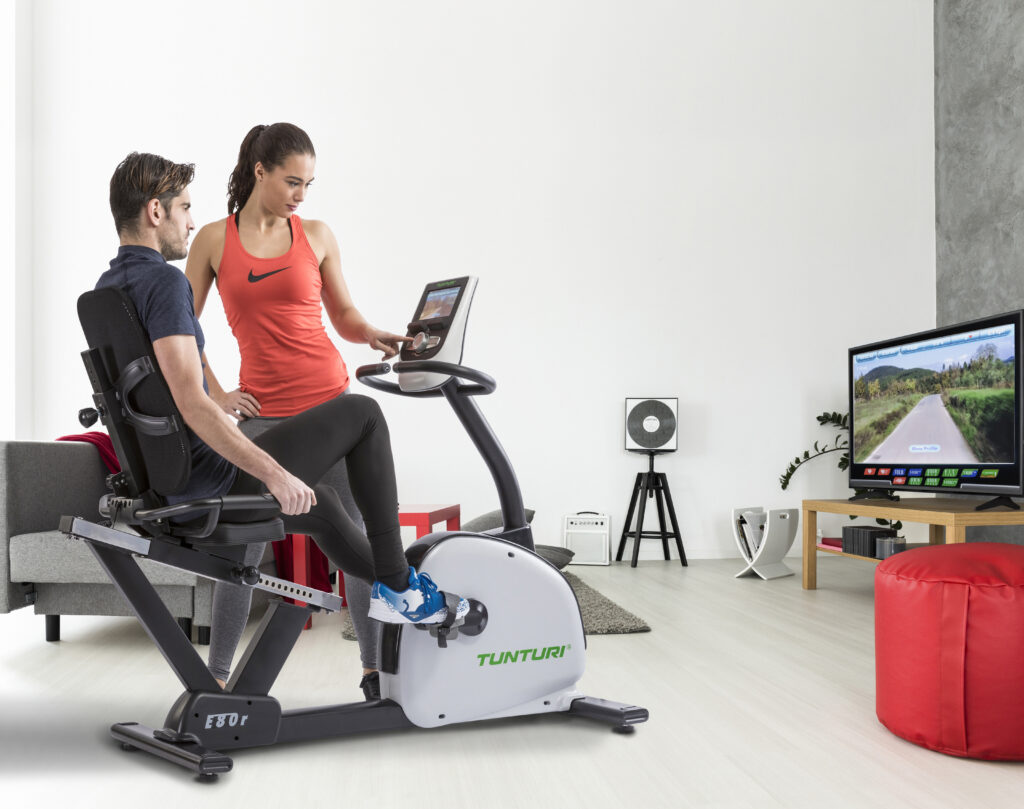
The horizontal velotraining machine is a very good choice for those with joint problems or lower back pain. In the semi-postural position, the spine and joints are not subjected to excessive strain, while still allowing you to exercise and improve and maintain your overall physical tone. Instead of a saddle, it has a comfortable chair with back support. Some also have handles on the sides of the seat in addition to the ones in front. The pedals are also spaced further apart, allowing the rider to lean on the backrest while pedalling. Horizontal velotrainers put less pressure on the joints, especially the lower back, wrists and forearms. However, they don’t involve a lot of core muscles in the workout either, because you don’t need them in a seated position (you need them to keep your body upright).
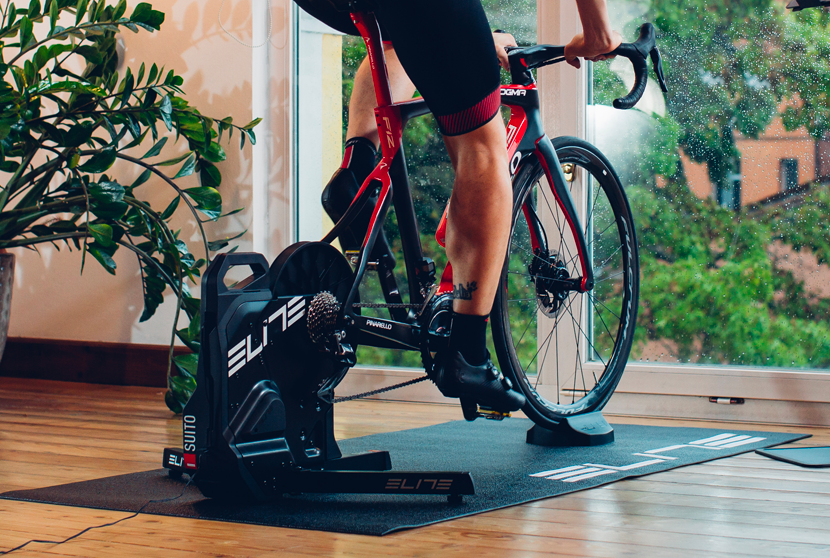
For serious athletes, there are also a different kind of at-home training, perhaps the most similar to real cycling.
If you have a normal two-wheeled bike, you can buy a bike trainer to convert it into a stationary bike, or a velo-trainer. There are many different types of training bikes. One is where the rear wheel of the bicycle is placed on a roller (a flywheel-type mechanism) and fixed with clamps. This creates friction between the tyre and the roller, which mimics driving on the ground. There are two types of these buckets, one in which the drag force is created by a magnet, the other by a liquid. Magnetic exercise dummies are louder and cheaper and cause more friction, while liquid-based ones are quieter and more expensive.
The second type of training wheels are those where the rear wheel is removed from the bicycle and replaced by a training wheel where the bicycle chain is connected to the training wheel.
When using training wheels, the bicycle still wears out to some extent and they are a little more difficult to fit. They may look small, but they’re still rather more expensive than a standard home bike trainer. If you can’t miss a training session even in winter, and if you need to train on your own bike (for triathlons and other races, for example), a training bike (which is the closest thing to real cycling) is indispensable.
Velomarket is the official distributor of Tuntur trenazers and we have a wide range of home training equipment. If you’re interested in strength training at home, you can find dumbbells, dumbbells, kettlebells or other additional weights and accessories in the Velomarket range. If you’re looking for a more serious gym workout, there’s a workout bench to suit you. For gymnastics at home, Velomarket offers a range of massage equipment, gymnastics and yoga mats, gymnastics balls, stretching bands and other equipment from the Tunturi range.
The tundra literally means “big mountain”, symbolizing the overcoming of challenges and the feeling of accomplishment that comes after intense training and self-transcendence.
The Tunturi began in 1922. in Turku, Finland, when brothers Aarne and Eero Harke opened a bicycle shop, Pyöräkellari Oy. Initially, the main focus was on repairing bicycles, and then the company itself produced bicycles under the Tunturi name. The brand was very successful and within a few years the small shop was replaced by a factory and by the 1950s the Tuntur brand was the leader in the domestic moped market. Using the technology and knowledge gained from bicycle manufacturing, Tunturi expanded into the production of other sports equipment.
1969. In 2008, Tunturi transformed the fitness industry by introducing the world to the first pedal ergometer for home use, and a year later, it gained international recognition as a manufacturer of sports equipment.
In the 1990s, a strategic decision was made to focus on the production of Tuntur fitness products and Tuntur bicycles. This decision was important for the further development of the brand. Tunturi is now a well-known brand in Scandinavian countries and Tunturi fitness products are sold in more than 40 countries worldwide.